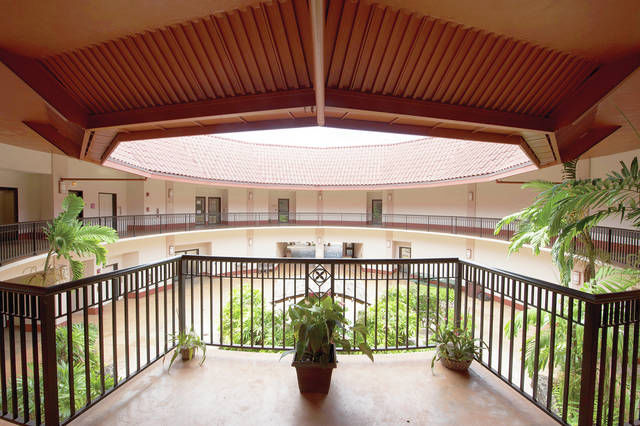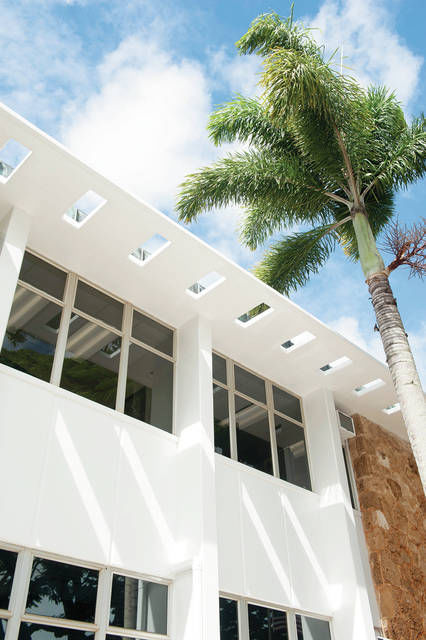LIHUE — The distinctive mid-century architecture of Lihue continues to make history. Historic Hawaii Foundation partnered with the Hawaii chapter of Docomomo US and will host presentations about Kauai’s mid-20th century architecture next month. “While only recently considered ‘historic,’ these
LIHUE — The distinctive mid-century architecture of Lihue continues to make history.
Historic Hawaii Foundation partnered with the Hawaii chapter of Docomomo US and will host presentations about Kauai’s mid-20th century architecture next month.
“While only recently considered ‘historic,’ these places are as much a part of the island experience and fabric as contributions of previous generations of designers and builders,” said Kiersten Faulkner, executive director of Hawaii Historic Foundation.
The presentations and tour will be accompanied by a new full-color booklet that showcases buildings from the modern architecture movement on Kauai and includes how Hawaii’s post-World War II building boom shaped island communities.
The modern period (1933-1979) was a time of significant transformation in Hawaii as its status changed from a territory to the 50th state, from a rural plantation society to an urban one, and from an agricultural economy to one dominated by tourism.
The post-war economic boom and population growth spurred development, and Hawaii design professionals responded with an original, regional definition of modern architecture that incorporated local building materials and Native Hawaiian culture.
“Because of their relatively new age and familiarity, modern buildings and sites are often perceived as commonplace and of less value than older historic structures,” Faulkner said. “Historic Hawaii Foundation aims to counter that perception by bringing new community awareness to ensure that the buildings and the period they represent are identified, preserved and remain a contributing part of their communities for present and future generations.”
Founded in 1974, the nonprofit Historic Hawaii Foundation is a statewide organization dedicated to preserving historic buildings, sites, communities and objects that tell the stories of Hawaii’s history.
This is the sixth tour day that Docomomo US, Hawaii Chapter has participated in, said Tonia Fung, president of the board of Docomomo Hawaii.
“We strive to bring hidden gems to the forefront, so our tours often go to areas that people seldom see as mid-century modern marvels. Lihue will be the first time we are taking the tour on the road,” she said. “Lihue has exceptional modern style buildings as well.”
The architectural walking tour demonstrates a variety of Lihue’s civic and commercial architecture. Highlights include Lihue Public Library, Kauai War Memorial Convention Center, First Hawaiian Bank, Lihue Plantation Headquarters and Lihue Shopping Center.
Information will also be provided for a special self-guided island tour on Oct. 8. The driving tour will feature buildings such as Vladimir Ossipoff’s National Tropical Botanical Garden’s Research Campus, Architect Hawaii’s Koloa Union Church, Edwin Bauer’s First Hawaiian Bank in Koloa, Hart Wood’s Lihue Union Church, and the Hanapepe United Church of Christ.
Its free Lihue Modern Architecture Presentation & Talk Story event happens Oct. 6 from 5 to 7 p.m. at Lihue Civic Center.
The Lihue Walking Tour takes place Oct. 7 from 3 to 5 p.m. beginning in front of the Lihue Civic Center.
The tour costs $35 for Docomomo/HHF members and Kauai residents.
Info: www.historichawaii.org, 523-2900




